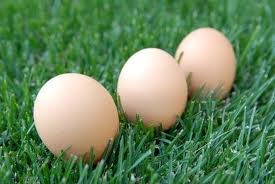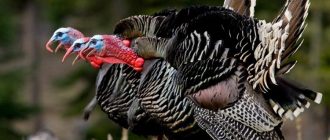Want some information on hatching turkey eggs? Read on to find out how you can incubate and hatch turkey eggs…
If you want to keep turkeys and breed them you should know what the traditional breeds are and how you can incubate and hatch turkey eggs. Start by collecting the turkey eggs two times a day and recording their frequency, size and the number of good yields provided by each pen during the season.
Light breeds are known to lay approximately hundred eggs each season and start laying much earlier than heavier turkey breeds. A heavy turkey starts laying late and continues for around 16 – 20 weeks during this period it lays up to 50 eggs.
The season for laying eggs falls between April and June. However, depending on the breed, you may see some eggs being laid in March and July as well. If you have a ten-layer turkey pen then you should be able to realize a yield of 500 eggs or more. The fertilized eggs can be incubated either artificially in an incubator or by the bird.
Incubating and Hatching Turkey Eggs
Since hens become broody it is recommended that you use an incubator. A turkey hen is very territorial and once it takes over a nesting box it will not budge and instead makes loud cackling noises at anyone who tries to move her.
If you do not require a turkey hen to brood then you should relocate her to a cool area from where she can see the breeding pen and calm down. After a few weeks of such calming she can be returned to the breeding pen.
Recommendations for Artificial Incubation
If you’re considering artificial incubation then the incubator must be placed in a very cool area of the pantry. The eggs should be stored for a maximum of one week before they are incubated. Before you place them in the incubation machine you must bring them back to room temperature and sanitize them. This will ensure that they’re free of any pathogens as the egg sanitation liquid kills all the germs. You should know that it is not advisable to keep the eggs in incubation for a long time. The primary reason for reducing the incubation period is to ensure a high rate of hatching. It can be assumed that hatchability reduces at around 2% per day from the time the eggs have been laid.
Selection Of The Hatching Turkey Eggs
The size of turkey eggs is similar to that of duck eggs. Make sure that each egg is clean and does not have any cracks or damage to the surface. Another very important facet to consider is that the egg is not misshapen in any way. Apart from this make sure that your incubator is preheated to the required temperature before you introduce the eggs into it.
It should also have been sanitized and cleaned before introducing a new batch of eggs for hatching. It is a good idea to keep it in a secluded area inside a building or even a shed. If you’re using an automatic incubator then you must read the manufacturer’s manual carefully to ensure that it is set to maintain the right temperatures and levels of humidity.
The beauty of an artificial incubator is that it can also turn the eggs on a regular basis to ensure even heating and incubation for a maximum yield of hatched turkey eggs.





